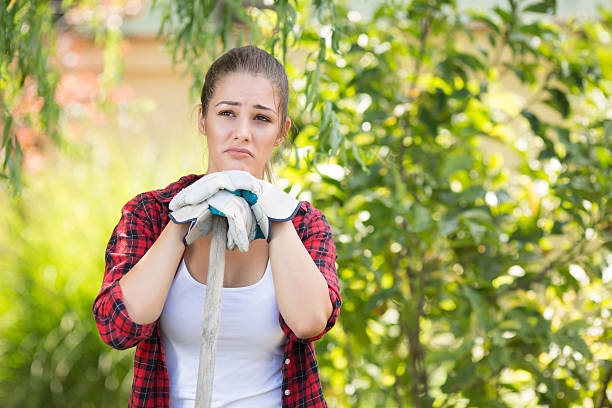
Many, including myself, have hopped on the ubër-chic trend of gardening. Which basically means lots of dismal failures have and will continue to occur. Over-watered plants, under-watered plants, weeds, pests, bad soils; the list of pitfalls is daunting. In fact, an entire industry has sprung up to lessen the sting of this failure. Self-watering boxes and bags, seed fabrics, time-released fertilizers all have whipped up frenzied marketing campaigns to help first time, urban and busy gardeners increase their probability for success. Who knows, some of it might even work.
However, some still forego all the accoutrements and give it a go with only their wits about them. This is what I did when I tore down my yard shed and tilled up my yard for an in-ground vegetable garden. Assuming the fertile Illinois soil would “just grow” about anything, no matter the care and attention paid, I planted my seeds. I watered them, weeded, and cared for them.
My reward so far is that half of my garden died and needed subsequent replanting. So, I guess I learned a few things; at least enough to be able to talk about my mistakes and plan on making it all up next year.
Expect Your First Year to be a Total Failure
It’s not necessarily that your first year will even be bad. So far, mine has turned out okay. And it’s not that gardening is especially difficult. But many first-time gardeners can be discouraged by fantastic visions of lush red tomatoes and such from the garden, only to be discouraged to the point of giving up when their fruit never ripens because there’s a shade tree just a little too close to the garden or some other unforeseen factor. This is a mistake, because learning from all the miscues will help you be a better gardener next year.
You can read everything you can about gardening, but until you do it there are simply things you cannot know. Most of these things are in relation to the specific plot of land you are using. Chances are slim that you will already know the lighting patterns throughout the day, or how water will drain and pool, or the chemistry of the soil in your garden. If you do know all this, the future bodes well for you.
However, after one year in the garden you will know that one corner of the garden gets two hours more sunlight than the rest because of the way the sun breaks through surrounding buildings. You will know that the opposite corner gets only filtered sunlight during the day because of close by trees and that another section tends to pool during heavy rain and/or watering.
You’ll also know how your plants are going to behave; what ones are going to creep, what ones will bush out and shade nearby rows, what ones need sun and what ones like more water. All this information will be handy for planning the layout of your garden in the coming years.
Read the Directions
I ended up planting sprouts directly in the ground because I did not read the directions on the seed package before planting. As a result, I never did get to enjoy delicious sprouts on my sandwiches. In fact, even when I did follow the directions, I was unable to pull it off. Some of the plants need more sun and some need more water. Using this information will, again, help you to effectively plan and care for your garden.
Additionally, many seed packets have the planting/harvesting times, plant height, and other useful information for you to consider. If you pay close attention to this information, you can avoid situations such as planting cucumbers and zucchini smack dab in the middle of the garden, a scenario that creates an explosion of growth spewing green shrapnel over surrounding rows and throwing out tendrils that can choke other plants. The seed packets also give you a realistic time frame for harvest, so you can plan that effectively as well. This way you don’t end up with 500 cucumbers all at the same time. Even for the most devoted cucumber fan, this translates into a lot of cucumber salads.
Stay the Course
Even for the most enthusiastic of new gardeners, there will come a time half-way through summer, when the temperatures are scorching, the weeds are utterly relentless and other activities encroach, that enthusiasm can wane. The result is a missed watering here and there, overgrown weeds and unkempt plants. Since summer is a busy time of year for everyone, some of this neglect is understandable.
However, much of it can probably be associated with the “high” of undertaking a new endeavor followed by the reality of work that follows. So, try to bottle that initial enthusiasm and use it during the hot and humid summer days. This will ensure that your garden receives adequate care throughout the growing season, which translates into higher yields and a greater chance for success.
The first year in the garden, as many veterans can attest, can be fraught with peril. But if you can keep your eyes on the big picture, you can use all the practical knowledge you accumulate to make each successive year a bigger success than the previous one.
Drew Landis is Social Networking Coordinator for an online greenhouse retailer.
Related Articles & Free Email Newsletter Sign Up
How to Get Started with Organic Gardening in a Greenhouse
How Vertical Gardening Techniques Save Space and Help Yields
Simple Steps for Better Weed Control in the Garden



Comment here